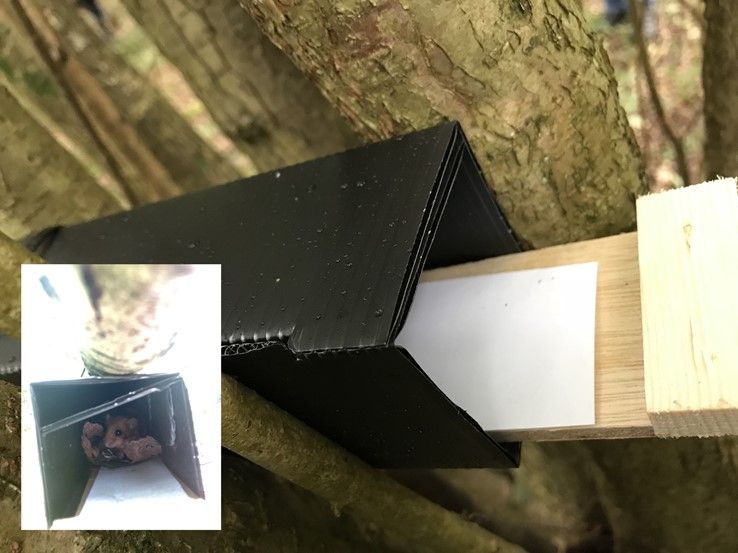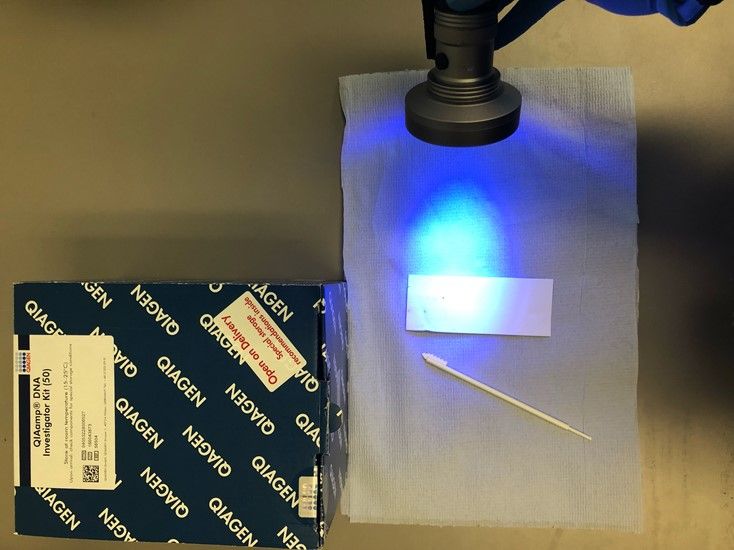All organisms shed DNA into the environment. Sources of DNA include mucus, hair or fur, skin, urine and faeces. This environmental DNA, or eDNA, can be extracted from samples taken in the wild (usually soil or water) and used to detect different species, measure biodiversity, and even look at the abundance of different animals. It’s great because it’s non-invasive – it doesn’t disturb the animal in question. We don’t need to see evidence of animals to know that they’re present in a location, so this is a particularly potent tool when searching for elusive and rare species.
Challenges with eDNA and dormice
Since Natural England formally approved eDNA surveys of great crested newts, Imperial College London and Thomson Environmental Consultants teamed up to see if it’s possible to widen eDNA methods to other species which are a conservation priority. In the first few months of the project, we discussed different options. Hazel dormice regularly came up in conversation but seemed out of scope for our research. Their arboreal lifestyle and relatively low numbers made us think that traditional eDNA samples of soil or water may be possible but unreliable samples for this species.
I watched a documentary about how rodents urinate freely and how raptors might see trails of this urine in the UV spectrum. Then I read an article in The Dormouse Monitor by Detlev Seibert in Germany, about keeping hazel dormice in captivity. It confirmed that dormice constantly produce urine. So, armed with an ultraviolet torch and safety goggles, Matt Binstead, Head Keeper of the British Wildlife Centre, and I searched dormouse enclosures. We were anticipating a kaleidoscope of urine splatters but saw nothing.
Finding urine to find dormice
We solved the puzzle in a pet shop. I learned that UV torches are used to search for the source of pet odours. In this context, urine is more evident on pale surfaces. So I placed thick, white paper beneath the feeding bowls in the dormouse enclosures, and we finally found urine! In field tests, the paper would be vulnerable to the elements and difficult to position in the vegetation, so I lined conventional survey nest tubes with paper and used forensic swabs and the QIAamp® DNA investigator kit to extract DNA from the samples.
Our field test showed that looking for hazel dormouse eDNA, instead of nests, was 12 times more efficient, taking into account the number of positive eDNA tubes and the number of survey days until detection (Priestley et al, 2021).
We’ve since tested the method for an entire survey season at three more sites, two of which were thought to have dormouse populations but were unconfirmed. Again, we found similar efficiency rates with at least one positive eDNA tube on the first check on day seven or eight at each site.
What this means for dormice and other animals
Footprint tracking tunnels are also very good at finding dormice. Nida Al-Fulaij, from PTES, put me in touch with Matt Parkins who kindly shared many footprint tunnel sheets from his surveys at Fingle Woods in Devon. We’ve been looking at whether every positive footprint sheet also results in a urine sample (it doesn’t) and whether any blank footprint sheets have urine spots, perhaps because the inkpads dried out or animals managed to bypass the ink. We’ve also extracted DNA from an incomplete nest found high up in the trees to confirm that it was from a hazel dormouse.
Many exciting questions are left to answer, but the biggest and most interesting will hopefully take the eDNA method beyond being used to confirm dormouse presence and infer absence. For example, we’re now testing whether the non-invasive urine samples can tell us about sex ratios, abundance, or even population genetics. If this is possible, we can use this data to understand the risk of local extinction which will help conservationists work out where dormice need our help most. The method is non-invasive, can be incorporated into existing surveys that use tunnels or other apparatus, and samples can be returned by post, which means it can be scaled up if monitors take part.
We know the eDNA method works for hazel dormice, wood mice and house mice. Excitingly, we also believe that the technique can be used for other priority terrestrial species. Other researchers might be able to use coarse paper in reptile survey apparatus to collect skin cells, artificial saltlicks to obtain saliva samples, or conspicuous clean lures to attract marking behaviour. I hope to share an update as the research progresses and would be happy to discuss any ideas and hear your feedback.
I would like to acknowledge my supervisors, Richard Arnold and Professor Vincent Savolainen, ecologists at Thomson Environmental Consultants, Knepp Estate’s resident ecologist Penny Green, Nida Al-Fulaij and Ian White at PTES, the Head Keeper at the British Wildlife Centre Matt Binstead, and dormouse experts Matt Parkins, Pat Morris, and Paul Chanin. The Natural Environment Research Council funds this research.
Written by Victoria Priestley. Victoria is a PhD student at the Grantham Institute, Imperial College London.
REFERENCES
Detlev, Siebert 2017, Keeping hazel dormice in captivity, PTES, <https://issuu.com/ptes/docs/dormouse_monitor_2017>
Priestley, V, Allen, R, Binstead, M, Arnold, R, Savolainen, V. Quick detection of a rare species: Forensic swabs of survey tubes for hazel dormouse Muscardinus avellanarius urine. Methods Ecol Evol. 2021; 12: 818– 827. https://doi.org/10.1111/2041-210X.13573



